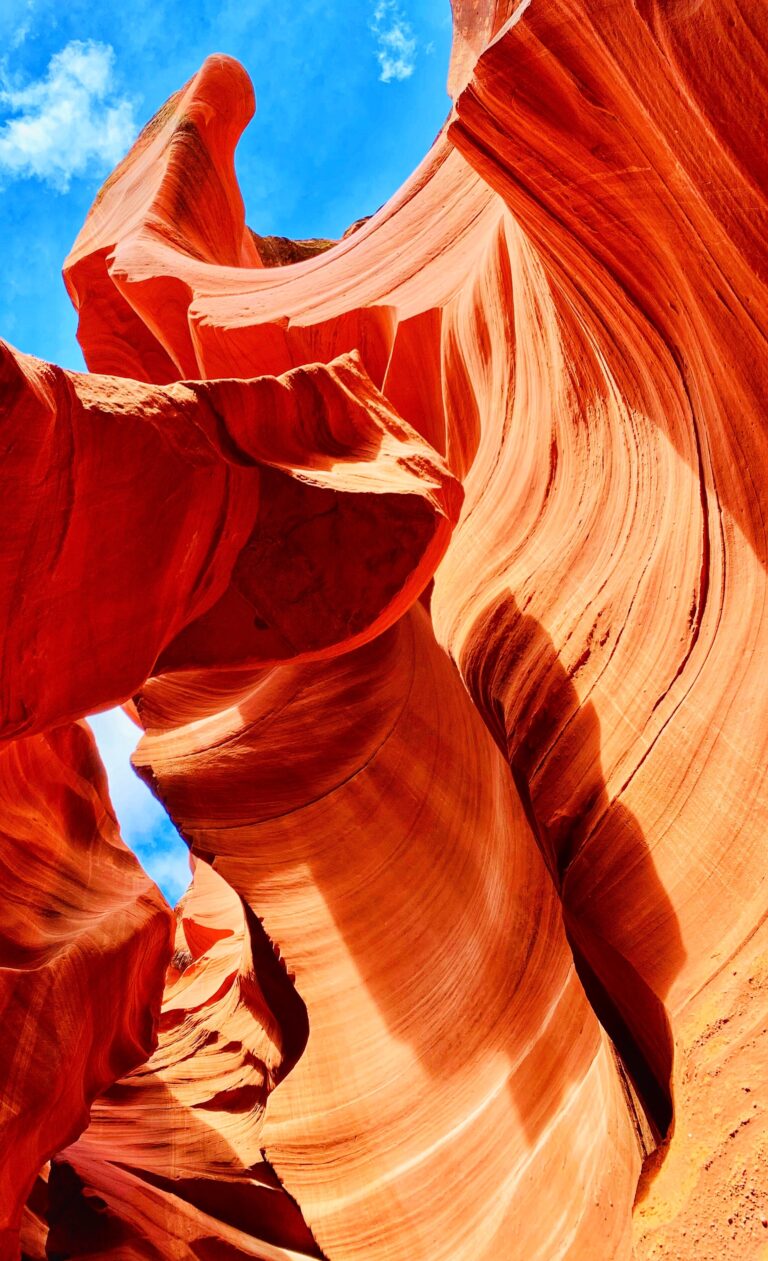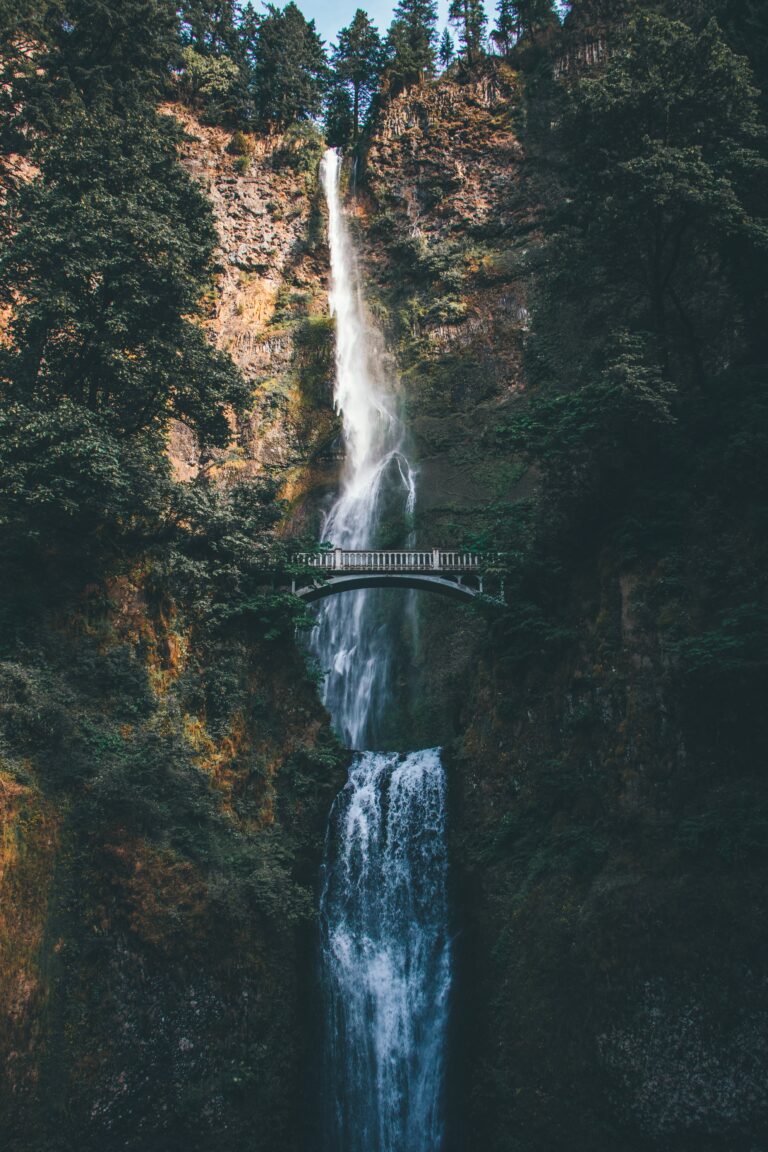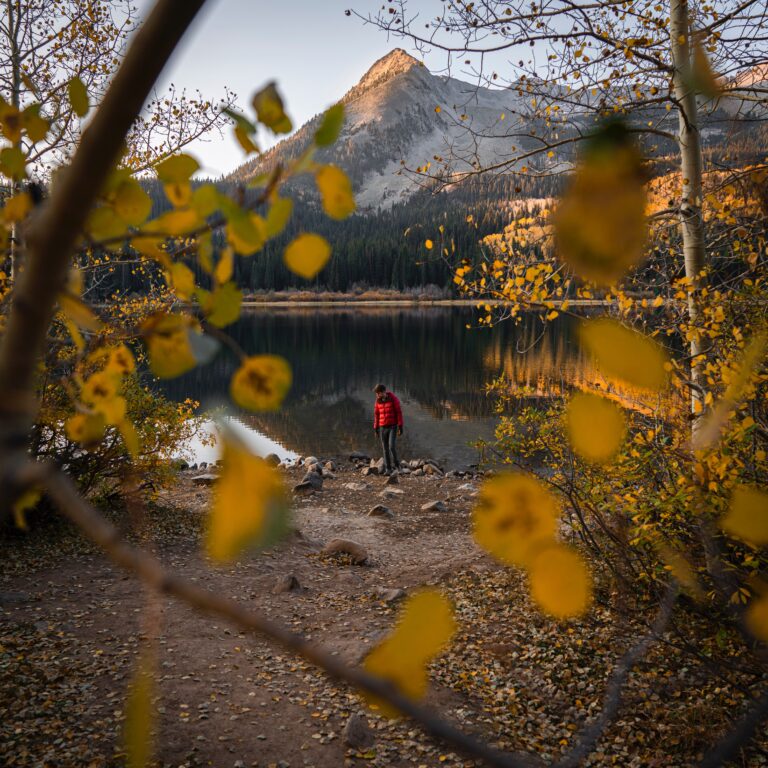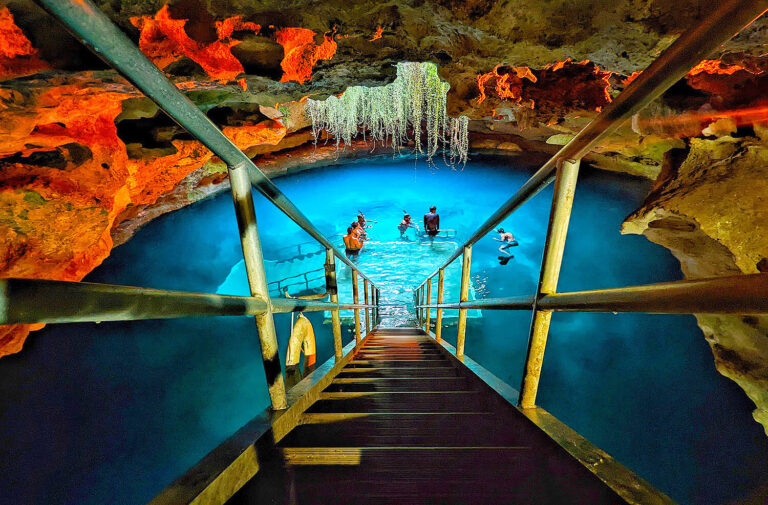The 13 Most Gorgeous Rivers in Alaska for Fishing, Swimming, & Stunning Views
Alaska has some of the most beautiful rivers in the world! Whether you’re looking to fish, swim, or just observe the incredible Alaskan nature, these rivers in Alaska should definitely be on your list.
Alaska has some of the best rivers in the United States, if not the entire world. It is a big state, and more than 12,000 rivers call it home. This means you can easily find a gorgeous river for fishing and swimming, and some even have beautiful views.
Since the 49th state is known for its cold weather, it might not be a great idea to go to a river in the middle of winter. But everything changes when it gets warmer. And some of these rivers in Alaska are too incredible to pass up any time of the year!
So, get ready to dive into the water, cast your fishing rod, and enjoy a beautiful view of these 13 most gorgeous rivers in Alaska.
13. Chilikadrotna River
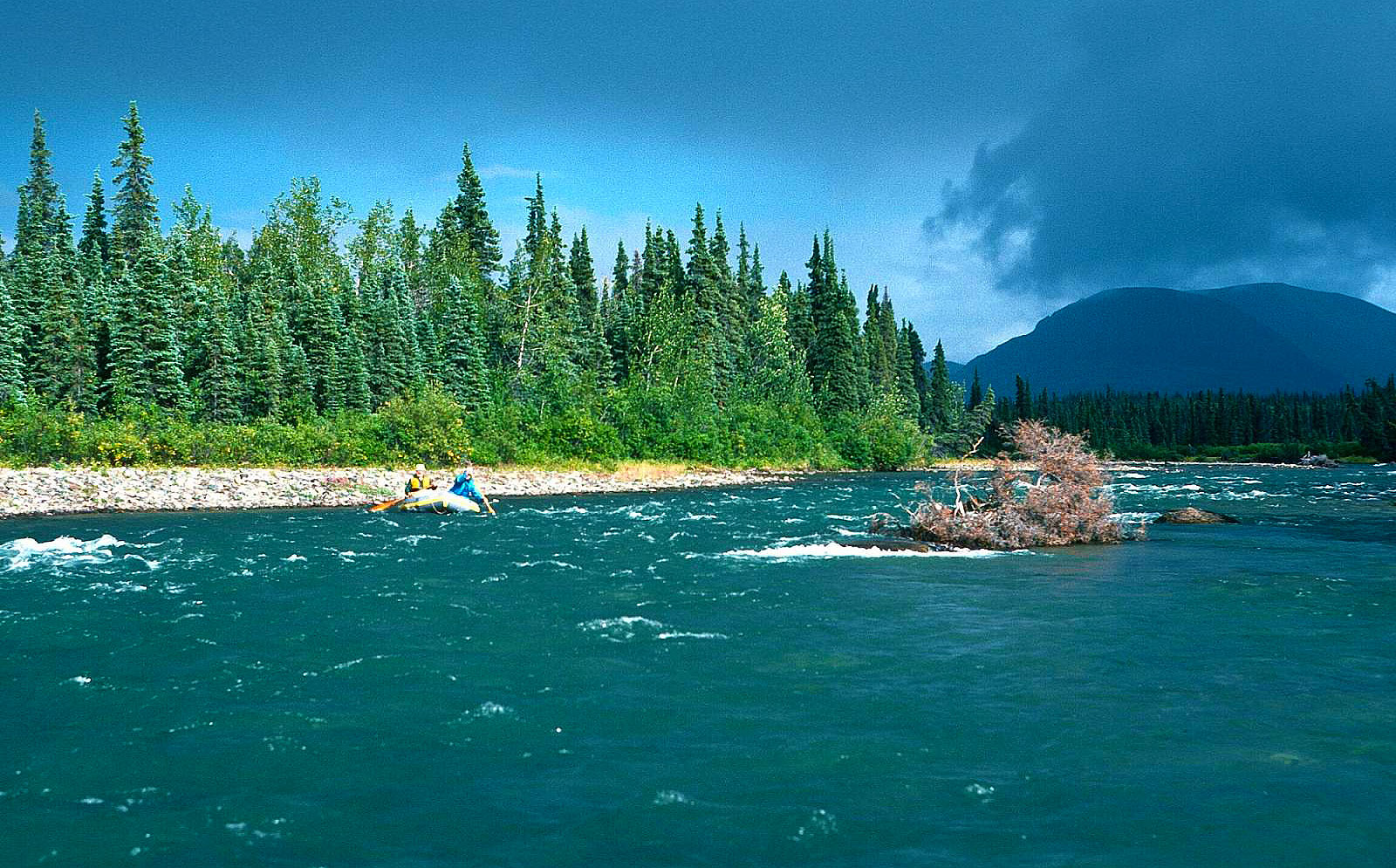
The Chilikadrotna River is a wild and scenic river that flows through Lake Clark National Park and Preserve. It starts in the aquamarine waters of Twin Lakes and goes past the park’s high peaks. It flows quickly for 60 miles until it meets the Mulchatna River.
Related: 8 Breathtaking National Parks In Alaska To Visit
The river flows through birch and spruce forests at an average speed of 5 miles per hour. The wavy highs of the southern Alaska Range rise above it. You can have an excursion here for as few as four days, but a long journey is better.
If you are an experienced whitewater boater, you’ll enjoy the river’s fast water and significant periods of exciting rapids. The 82-mile-long stretch takes between 4 and 8 days to complete when boating.
One of the best things about the Chilikadrotna River is how remote away it is. Often, your group will be the only one on the river. This spot is excellent for seeing wildlife along the river because it is clean and untouched.
Anglers can catch different kinds of fish at other times of the year. It has chinook salmon, sockeye salmon, coho salmon, dolly varden, rainbow trout, and grayling. This species’ season runs from the final week of June until the end of September.
12. John River
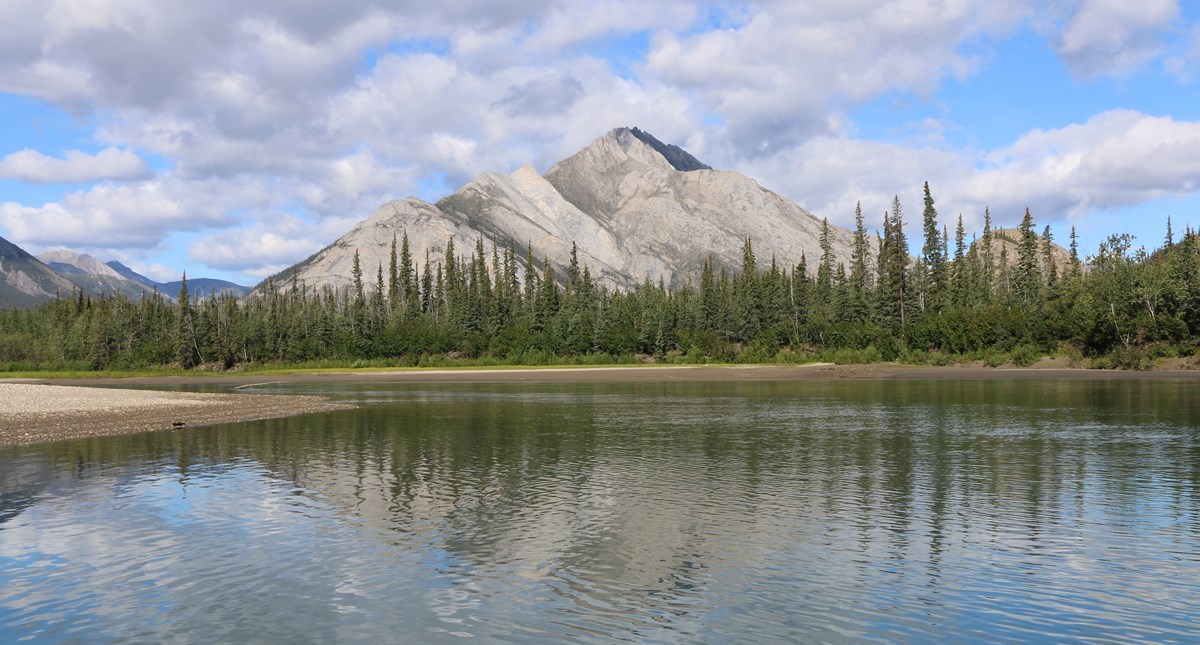
The John River flows for 136 miles from the Endicott Mountains, which are 6,000 feet high, to where it meets the Koyukuk River.
It starts at Soakpak Mountain thru Anaktuvuk Pass. It then flows to the mountainous terrain and forested valleys of the Brooks Range to the Koyukuk River just under Bettles Field/Evansville.
The John River corridor is among the most beautiful places in the Brooks Range. Along the John River, features like high relief, a wide range of plants, exposed rocks, canyons, and rock outcroppings make for a beautiful and unique landscape.
Different ecosystems give the visitor a constantly changing environment. The upper and middle sections of this river have great views because of how close the river is to the nearby mountains and how low the valley is.
Between the Hunt fork of the John River and the mainstem of the John River, there is a mountain with great views of Gray Mountain, Boreal Mountain, and numerous other peaks that make up the Brooks Range. You can get great views of the fairly beautiful Pamichtuk Lake drainage from some sloped areas.
In the fall, willows and cottonwoods turn a beautiful golden color. Near where Sheep Creek meets the river, there is a lovely section of the river with amazing views of Gunsight Mountain.
When the water level is high, the upper parts of the river are a class 2 to class 3+ float. The lower parts of the river are significant for a family float.
Even though the river flows through Nunamiut Corporation land at first, the area around the upper river is a great place for hiking and backpacking.
11. Koyukuk River
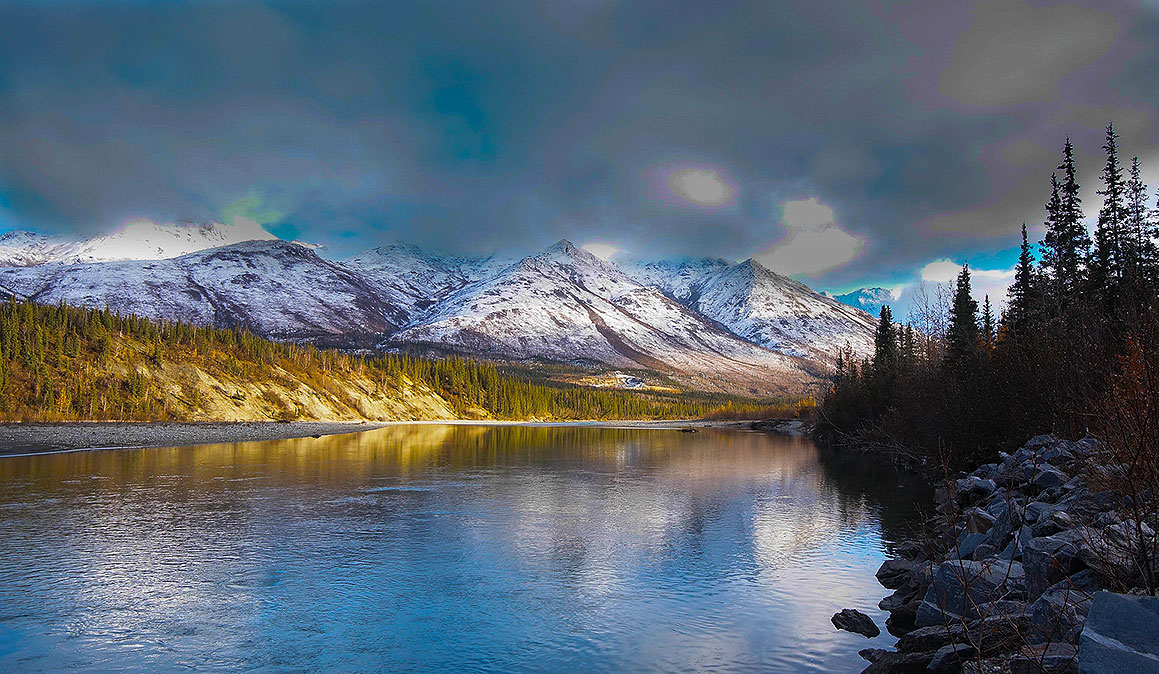
Koyukuk River is a 425-mile branch of the Yukon River. The last big river flows into the Yukon before the more significant river pours into the Bering Sea.
It starts where the North Fork Koyukuk River and the Middle Fork Koyukuk River meet and flows typically southwest to meet the enormous Yukon River at Koyukuk. The river’s headwaters are above the Arctic Circle throughout the Endicott Mountains of the Brooks Range.
It drains an area north of the Yukon River. And it is made up of Gates of the Arctic National Park Preserve, Kanuti National Wildlife Refuge, and Koyukuk National Wildlife Refuge.
Some fish that live in the lower Koyukuk are Arctic lamprey and sockeye salmon. Sockeye and other salmon species, like Chinook and Chum, also do well in the upper reaches and tributaries.
For wildlife seeing, caribou migrate through the upper portion of the Koyukuk river basin, and Beluga whales sometimes swim in the lower Koyukuk. You can also expect bald eagles, bears, minks, beavers, martens, and river otters.
The North Fork Koyukuk River has excellent floating conditions if you prefer to swim. There are also great places to go hiking, especially along the watershed’s upper reaches, with beautiful scenery.
The small number of people here makes it feel like a true wilderness—making it a great place to relax.
10. Colville River
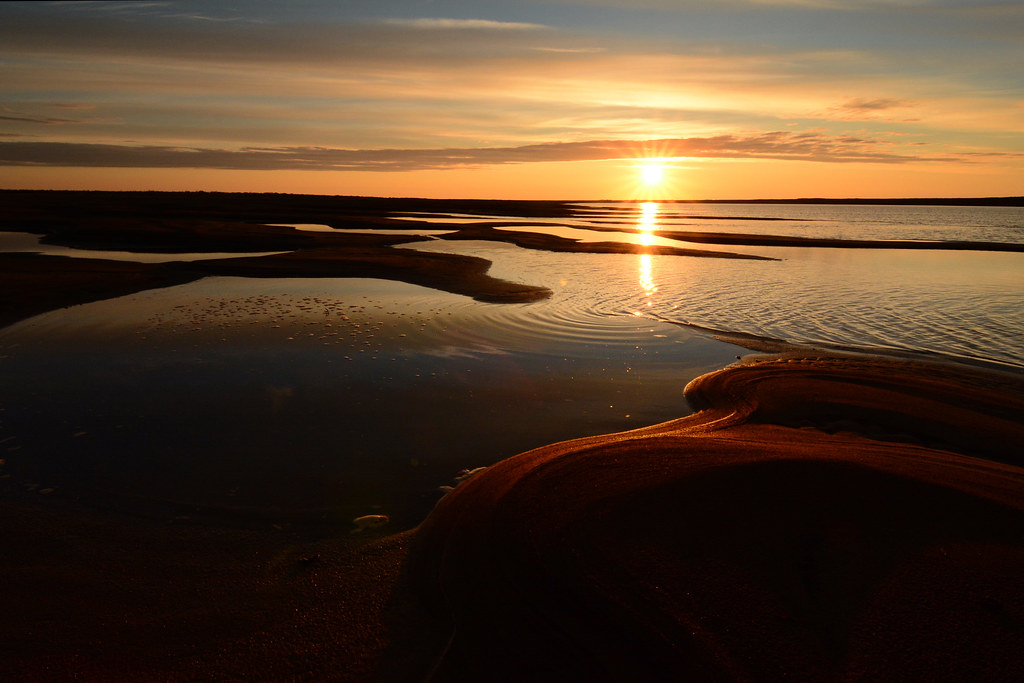
The Colville River is one of the great Arctic rivers in the United States. It is on the eastern side of the vast National Petroleum Reserve-Alaska and is a vital cultural and conservation area.
This river runs through Alaska’s North Slope and empties into the Beaufort Sea. It is among the country’s wildest rivers.
The eastern end is at the Endicott Mountains, and the western end is at the Delong foothills. A lot of the watershed for the Colville River is in Alaska’s National Petroleum Reserve.
Even though it is called the Reserve, this area is among the most environmentally intact places on the planet that are not protected. The Reserve is the most significant piece of federal land in the country. It covers 22.8 million acres, more than ten Yellowstone National Parks.
Though its name might make you think of roads, pipelines, and drilling platforms, the Reserve is actually where polar bears, caribou, wolves, moose, grizzly bears, and musk oxen can live without much interference. It is also an essential watershed for many fish, such as Arctic grayling, salmon, and whitefish.
If you are a bird enthusiast, expect numerous raptors, including gyrfalcons, rough-legged hawks, and peregrine falcons, building their nests on the high cliffs that line the river.
Residents of the area depend on the river for food and other things they need to live. The river originates from food and water and is a significant way to get to classical use areas and culturally relevant sites.
The upper parts of the Colville River are great places for visitors to enjoy the wilderness and have fun. Activities include paddling, fishing, hiking, watching wildlife, and taking pictures in the wild.
9. Copper River

The Copper River is 300 miles extensive and flows into the Gulf of Alaska close to the town of Cordova. The Copper Basin in Southcentral Alaska is 189 miles northeast of Anchorage and 250 miles to the south of Fairbanks. The river flows through the Copper Basin.
The Richardson Highway, the Glenn Highway, and the Edgerton Highway all lead to the Copper River. About 3,000 people live in 20 different communities in the Basin. Many of these communities are along the Copper River.
The Glennallen & Chitina subdistricts make up the Upper Copper River District. In the Glennallen Subdistrict, subsistence fishing is only allowed in the mainstem Copper River’s waters from the Slana River’s mouth to the edge of the Chitina-McCarthy Bridge.
The Chitina Subdistrict is a personal-use fishery, according to state rules.
More than 2 million salmon use the river watershed yearly to spawn, which is why the river is known for its salmon runs. Due to the long runs, many kinds are famous for their high-fat content.
But, the commercial salmon season on the river is short. Chinook salmon or sockeye salmon are available to catch for a few days or even only hours starting in May.
Sport fishing, on the other hand, is allowed all year long. The best time to fish on the Copper River is from August to September when the coho salmon run.
Apart from fishing, this Alaskan river is a great place to see birds. Millions of shorebirds or trumpeter swans build their nests here.
Also, this river’s spectacular views are a great way to enjoy the beauty of nature. If you’re looking to visit one of the top Alaska rivers closer to the main cities, then Copper River is your best choice.
8. Chena River

In the Interior area of Alaska, the Chena River is a 100-mile branch of the Tanana River. It flows from the White Mountains in a generally westward direction to the Tanana River near Fairbanks, which is on both riverbanks.
The North Fork, Middle (East) Fork, South Fork, West Fork, and Little Chena River are all tributaries of the Chena River.
Most of the upper half of the main stem is by the Chena River State Recreation Area. People go fishing and boating on the Chena River for fun. During the colder months, snowmobiles and mushers also use it (sled dogs).
The Chena is among the most famous river in the interior of Alaska for sport fishing. Fish like Arctic grayling, burbot, humpback whitefish, chum salmon, king salmon, longnose suckers, least cisco, northern pike, round whitefish, and shellfish live in the Chena River.
By the mid-1980s, the number of graylings in the Chena had dropped to “dangerous levels” because of overfishing. Throughout the 21st century, you can only catch and release grayling, which can grow 18 inches long in the upper river.
You can also go for a “float” on this river. On the International Scale of River Difficulty, most of the river has Class I rates. However, the upper routes along the North Fork close to Chena Hot Springs are “remarkably swift” with few safe flows and are rated Class II. These difficulties can go up depending on the water level.
The Chena River has a great system of trails for hiking. You can pick from several hiking trails that lead to great views. It’s definitely known for the hiking views!
7. Susitna River
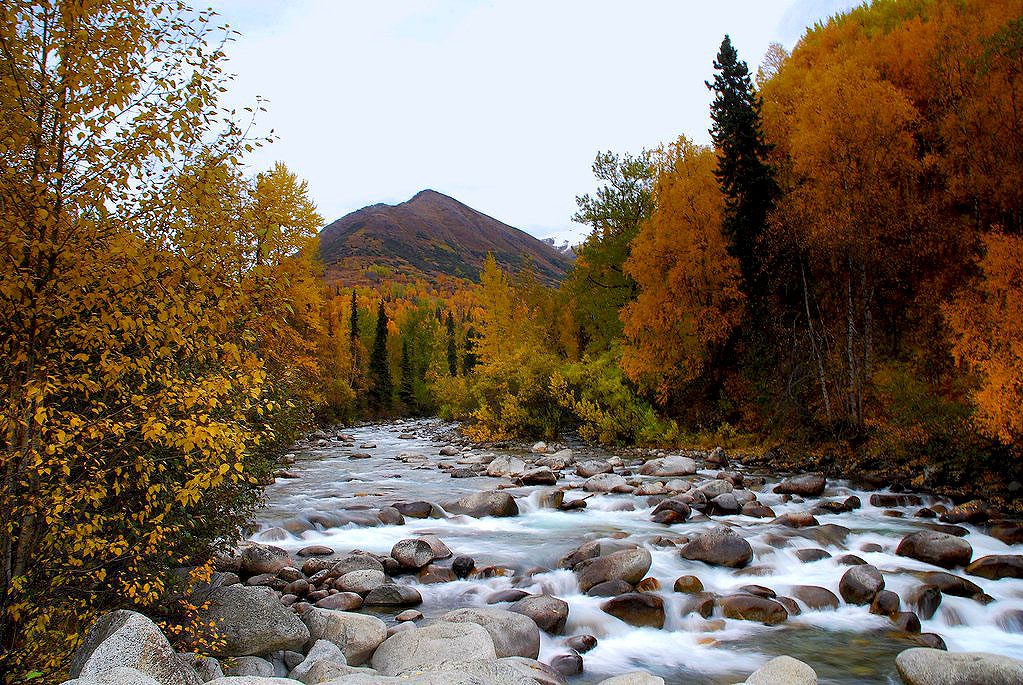
From where it starts at the Susitna Glacier, only north of Denali National Park, the Susitna River flows about 313 miles to the Knik Arm of Cook Inlet. Along the way, you can fish, hike, and enjoy the vast world while enjoying Alaska’s beauty.
The river is wide and moves quickly. It gets water from about nine other rivers, like the Deshka River, Oshetna River, Talkeetna River, Yentna River, and the Tyone River.
Many small creeks with clear water flow through the water and add to the vast amount of water that flows through the channel to Cook Inlet.
If you’re looking to stay local, Willow, Talkeetna, and Susitna are the main towns in the area.
Willow is the best example of a small town on this list. There are many spots to camp and get supplies there. Talkeetna is a little bit bigger, while Susitna is close to Anchorage.
The Susitna River is not somewhere to mess around. There are better places to learn how to raft, kayak, or canoe than the water. Even swimming is dangerous here. You definitely want to know what you’re doing!
From Denali Bridge to Talkeetna is classed as an III-V for expert white water rafters, as well as the water is fast, so getting rescued isn’t always an option. These muddy, fast-moving, and full-of-things waters are by glaciers.
The smaller rivers flowing into the Susitna are better places to have fun than the Susitna.
But the place is a beautiful place to fly fishing. You can catch Rainbow Trout, Dolly Varden, Pacific Salmon, and Arctic Grayling of all five types.
When the fishing season begins in early May, the Susitna may be lower than it is in the summer, when melting glaciers and runoff are more vigorous. You can fish until about the middle of October.
6. Yukon River
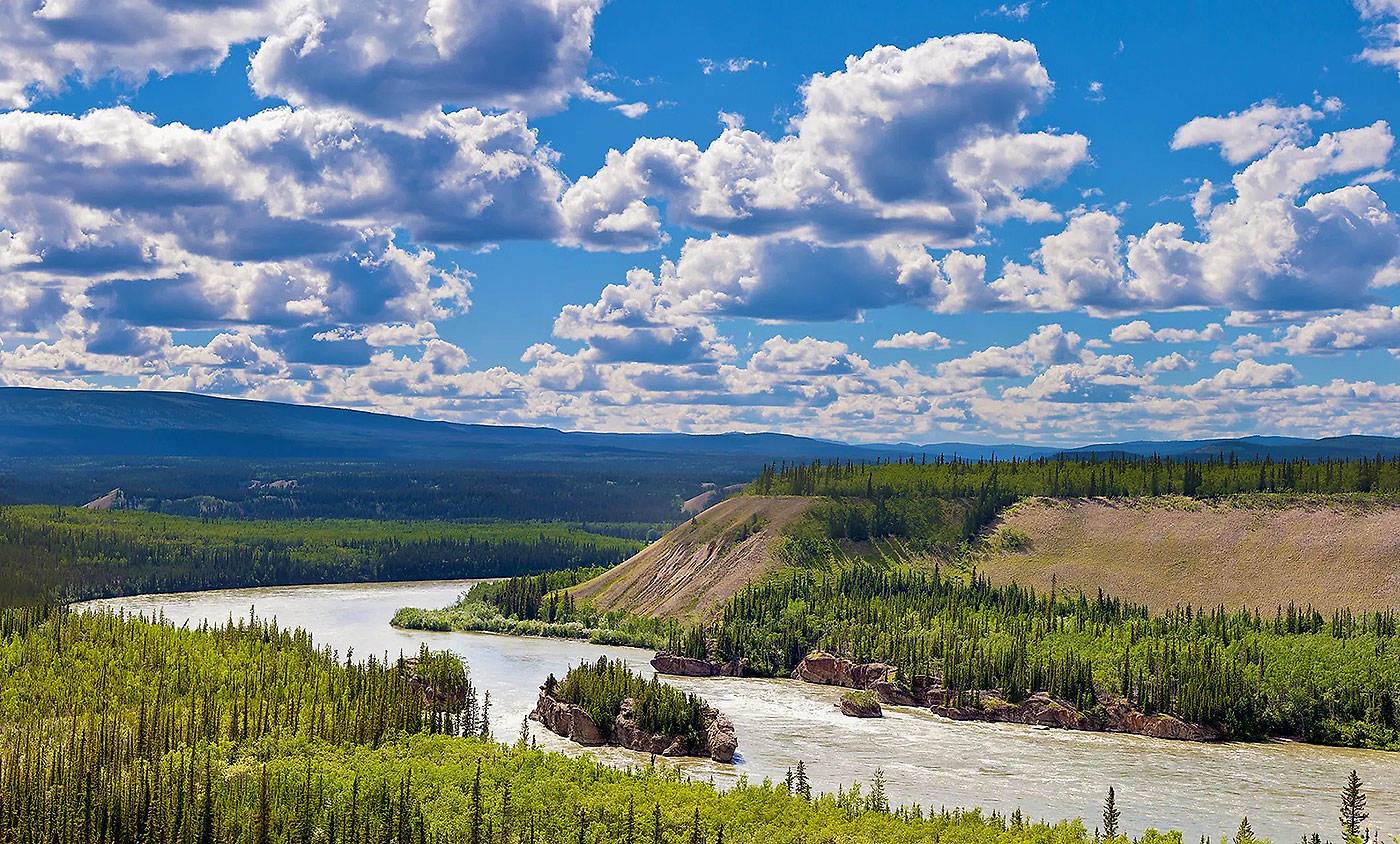
Yukon River in North America is the fifth longest, with a total length of 1979 miles, 714 of which are in Canada. It begins in the northwestern side of British Columbia, near the border with Yukon. It flows north and northwest through the Yukon into Alaska and then west to Norton Sound to the Bering Sea.
Within the Yukon’s sizeable central plateau, surrounded by the Mackenzie Mountains in the east and St. Elias Range in the southwest, the Yukon Rivers and streams form the area’s central drainage basin.
The Yukon is a braided, slow-moving river that is usually shallow unless spring water makes it more profound.
It can split into two parts: the area upstream of where the Yukon River meets the Porcupine River has a slight rise, but the area downstream, all the way to the Bering Sea, is relatively flat.
The Yukon has wooded isles from Fort Selkirk to Dawson, and mountains surround its long, vast stretches. After Dawson, the valley gets smaller, and when it reaches Alaska, it widens into the “Yukon Flats,” a sizeable interior plateau.
You can also go fishing on this river. Arctic grayling, an essential sports fish, Dolly Varden (trout), inconnu, burbot, cisco, and three types of salmon (chum, coho, and chinook) are the most common fish.
Besides fishing, tourists like to explore this vast waterway for other water activities. And there are numerous ways to enjoy the clean river flowing through the Yukon. You can swim, kayak, rent a speedboat, or ride a paddle wheeler.
Even if you can swim in the river, you shouldn’t jump headfirst. Every year, people drown or come close to drowning in the river, which is known to be deadly.
5. Tanana River
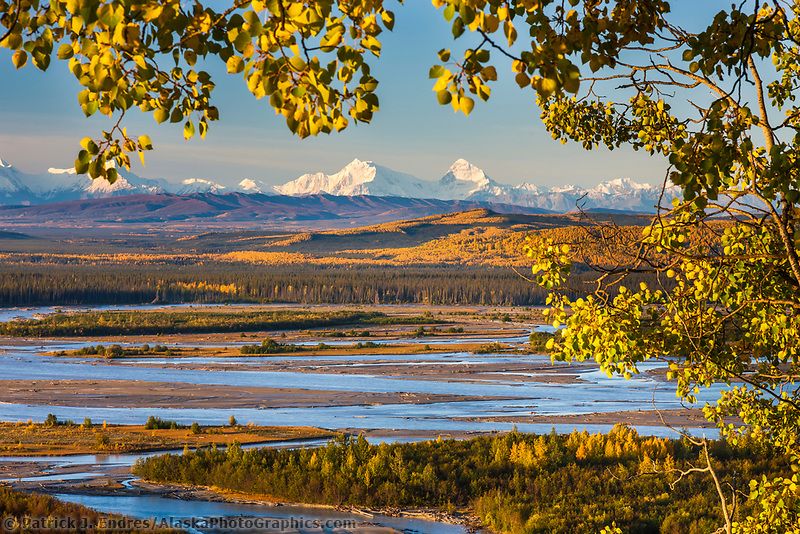
The Tanana River is the second-largest river that flows into the Yukon River. It starts where the Nabesna and Chisana rivers meet and flows for about 570 miles. The Athabascan word “tenene,” which means “river trail,” is where the river got its name.
This river flow through the east-central part of Alaska. Its source is where the Chisana and Nabesna rivers meet in the northern Northway. Tanana River Basin drains about 45,918 square miles.
The river’s main stem, which starts where these two rivers meet, is a sizeable glacial system. For its flow, the Tanana River moves northwest of the Yukon Territory. At the bottom of the Alaska Range, the river flows northwest until it meets the Yukon River near Tanana town. The river stays close to the Alaska Highway almost the whole way.
The Tanana Valley is the lowland marsh area where the Tanana River flows into central Alaska. The river’s flow is at its highest in July before it turns into a subsurface stream in late summer. During the winter, the river gets an ice layer that can be as thick as 43 inches.
Wild and farm-raised fish are in the Tanana River, and many anglers catch them. There are 18 types of fish in the river, but most anglers only go after 6 of them.
Chinook and Silver sockeye, burbot, Arctic ling cod, Northern pike, and Lake trout are the six types of fish on this list. Rainbow trout are also found in the river but are not native to it. Instead, they are brought there from somewhere else.
This river is a popular place for more than just fishing. In its clear blue waters, you can boat, kayak, paddleboard, or swim. You can enjoy a beautiful mountain view while doing this.
4. Kenai River
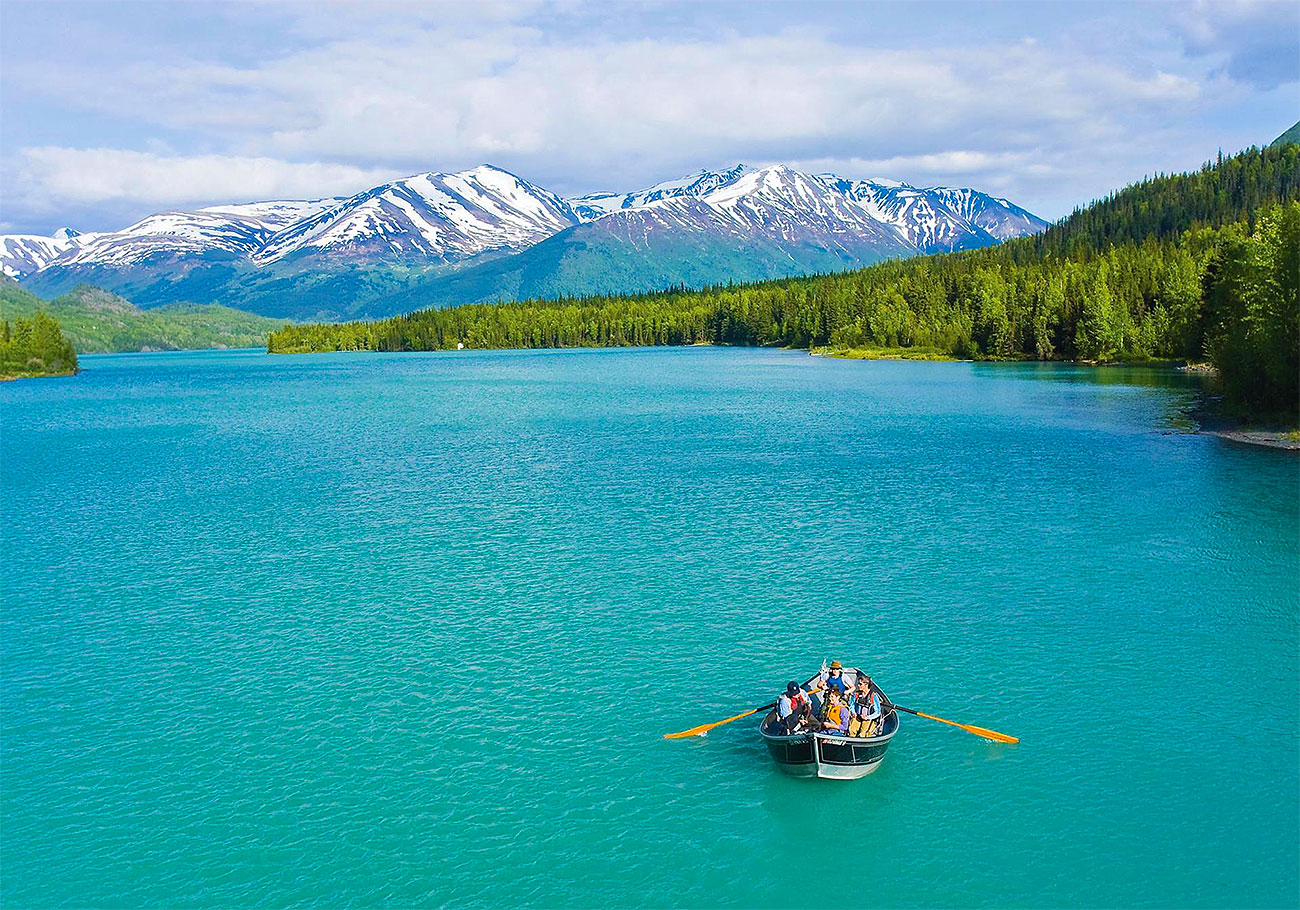
The Kenai River is the longest in the Kenai Peninsula in south-central Alaska. It flows west for 82 miles from Kenai Lake in the Kenai Mountains, thru the Kenai National Wildlife Refuge and Skilak Lake, and into the Cook Inlet of the Pacific Ocean close to Kenai and Soldotna.
This river is often among the best for sport fishing in the world. There are more than 105 miles of rivers and lakes in the Kenai River Special Management Area. And it is where you can find the best river fishing in the state.
This area is also excellent for boating, backpacking, hiking, and seeing brown bears. Several tour companies offer whitewater rafting excursions to aid people in getting the most out of the river and its beautiful surroundings.
Its turquoise waters are home to rainbow trout, Dolly Varden, lake trout, and four of the five types of Pacific salmon. However, the king salmon gets the most attention. Usually, an Alaskan trophy salmon weighs about 50 pounds. King salmon in the Kenai River can weigh more than 75 pounds. The most prominent king salmon was caught here in May 1985 when Les Andersen caught 97.4 pounds of fish.
There are other species in this area, too, such as eagles, moose, caribou, wolves, and more.
Near the Kenai River, there are a lot of towns where visitors can find plenty of services, like private and public campgrounds, places to stay, and fishing shops that cater to both men and women. Cooper Landing, Sterling, Soldotna, and Kenai are all popular places to stay when you want to visit, view the surrounding landscape, or fish in the Kenai River.
You can reach the Kenai River from the Sterling Highway and Seward Highway on the Kenai Peninsula.
3. Alatna River

The Alatna River flows southeast from the Endicott Mountains for 145 miles until it reaches the Koyukuk River.
Alatna River, a wild river since December 2, 1980, comes from lakes high on the Arctic Divide, which drains the central Brooks Range. Along the river corridor is many animals, beautiful scenery, and interesting geological features.
The first 25 miles from the watershed lakes are rocky and can be very shallow. During low tide, a portage from several miles from Summit Lake can be necessary, and boats may need to line up.
The Alatna River passageway has beautiful views, including of the Arrigetch Peaks, an organic national landmark made of granite.
Over half of the river has beautiful views of snowcapped mountains. The Alatna has a lot of variety in its landscape because the shades and types of plants are different.
Moisture-rich tundra on the valley and tundra on the mountainsides are by cliffs bluffs along the river. You can see the Arrigetch Peaks near the river, which sometimes reflect in alpine lakes.
Geologically, the mountains on either side of the Alatna are very different, with limestone, shale, quartzite, basalt, and sandstone formations. The rugged, ax-blade-shaped Arrigetch peaks on the south side of the Alatna and rise nearly 3,000 feet have been assigned a National Natural Landmark because of their smooth granite walls.
These peaks are part of the granite disturbance that distinguishes the Alatna or Noatak River drainages.
The Alatna River is a great place to float through the wilderness and gives you access to great hiking and climbing within and around the Arrigetch Peaks. You can see stunning views as you travel along the upper part of the river. This is one of the best rivers in Alaska for incredible views!
2. Nenana River
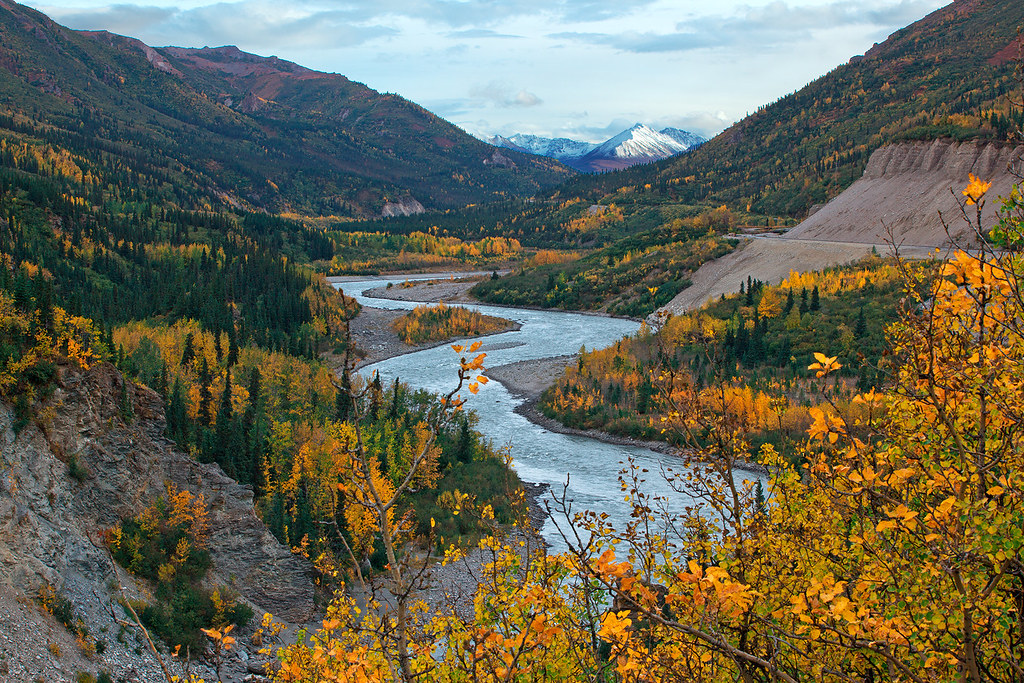
The Nenana River is a glacial river that runs along the eastern edge of Denali National Park. It is one of the most widespread places in the state to go river rafting.
This river has different difficulty levels and a thriving rafting business that takes locals and tourists from other states on 2-hour, 4-hour, and overnight trips.
It is also a popular place for boaters from all over the state to go whitewater kayaking. Every Fourth of July, there is a Nenana Wildwater and Slalom Race.
The 10 miles of Class IV whitewater in the Nenana River Gorge are in a hilly canyon where wild sheep roam and golden eagles nest. There is a beautiful remote area with moose, bears, wolves, and caribou at its source. The rough Alaska Range Mountains surround this area.
At about 140 miles, this branch of the Tanana River is also home to many different kinds of fish. Alaska blackfish, Arctic lamprey, broad whitefish, burbot, humpback whitefish, chum salmon, king salmon, and lake chubs are among the marine animals you can find and catch. Also available are longnose suckers, least cisco, northern pike, sheefish, silver salmon, round whitefish, and slimy sculpins in this river.
The beautiful scenery around this river is why it is so popular. You can get there by road, and the picture will be stunning along the drive. The Denali Highway (Alaska State Highway #8) and the George Parks Highway (Alaska State Highway #3) are easy to get to in many places.
You can even go hiking if you want to see the river’s landscape from a different angle. But if you’re going to experience the river, you can plan a one or two-night trip or rafting.
1. Matanuska River
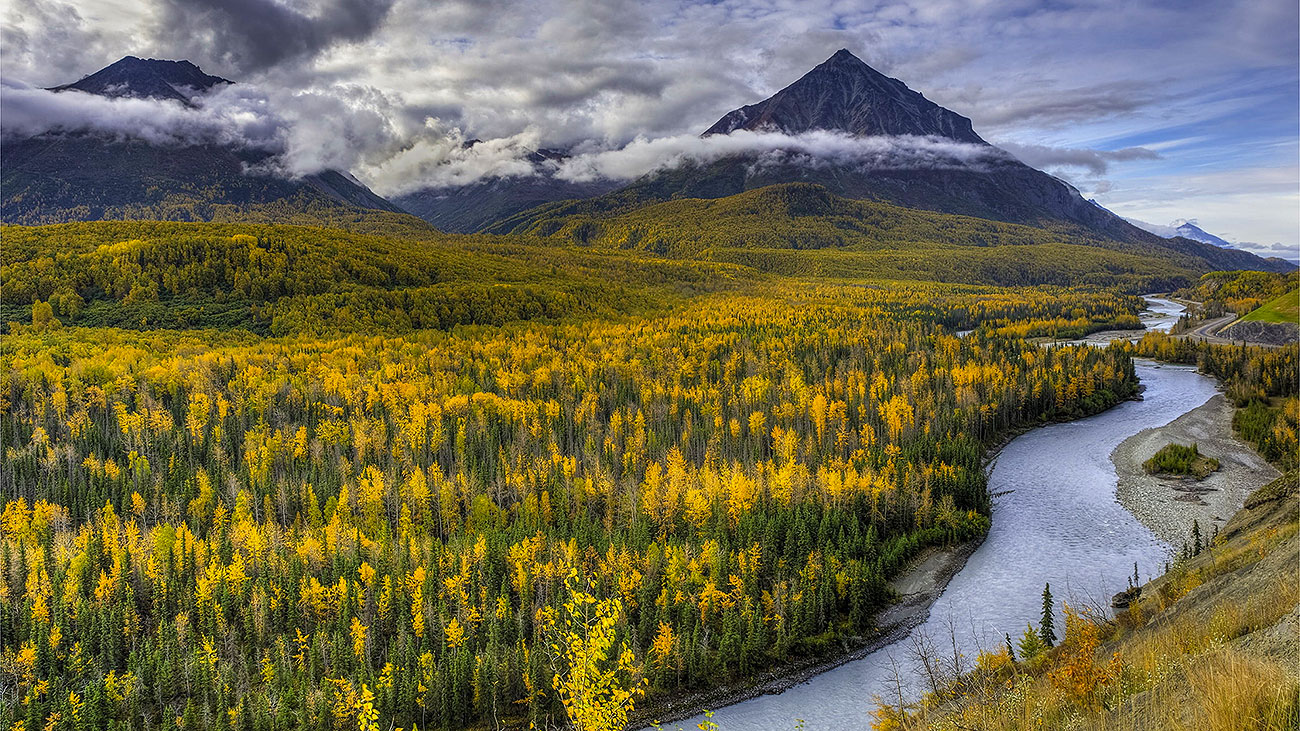
The Matanuska River is a 75-mile-long river in the U.S. state of Southcentral Alaska. It flows through a wide valley south of the Alaska Range. This valley is called the Matanuska Valley after the river.
The Matanuska River starts where its east and south forks meet. It flows in a southwest direction towards the Knik Arm of Cook Inlet. Meltwater from the Matanuska Glacier around the northern Chugach Mountains flows into the river after it flows out of its source.
From there, it goes through Matanuska Valley, between the Chugach Mountains and the Talkeetna Mountains. Along its path, Chickaloon, Sutton, Palmer, and Butte are all places where people live. It flows into the Knik Arm of Cook Inlet, roughly 25 miles northeast of Anchorage and 9.5 miles southwest of Palmer.
Whitewater enthusiasts like to float down the river, mostly in rafts or kayaks.
Based on the International Scale of River Difficulty, Matanuska ranges from Class II (medium) to Class III (difficult). It is reachable at several bridges along the Glenn Highway.
Caribou Creek, which flows past Matanuska Glacier and is rated Class II to IV, is sometimes paddled by experts (challenging).
Along the main stem, dangers include fast, cold water, big waves and holes in some parts, overlying or submerged vegetation in the lower regions, and upriver winds.
Going through the river, you can see beautiful mountains and forests.
You can also fish in this river, which is another popular thing to do besides boating.
Many aquatic Pacific salmon live in the Matanuska River, like coho, sockeye, chinook, chum, and pink. There are also rainbow trout and Dolly Varden that live there year-round.
In Closing
With thousands of rivers in Alaska, you will indeed find the ideal spot for your waterway outdoor pursuits. There’s no way you won’t have a good time, especially because each offers something different.
So get your equipment ready and try one of Alaska’s 13 most gorgeous rivers for fishing, swimming, and stunning views!
